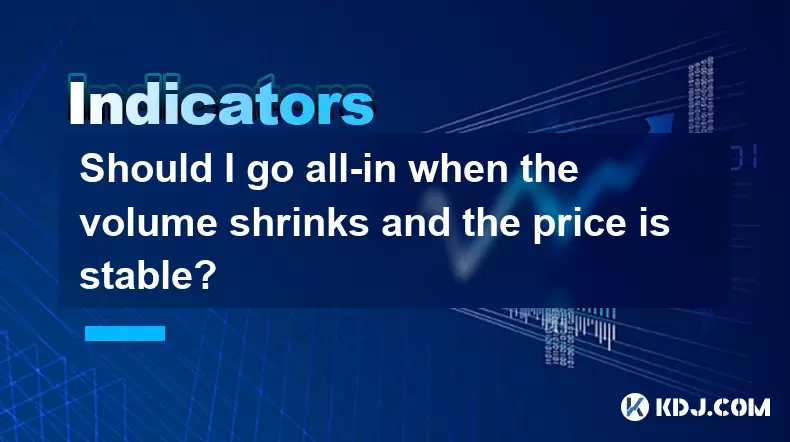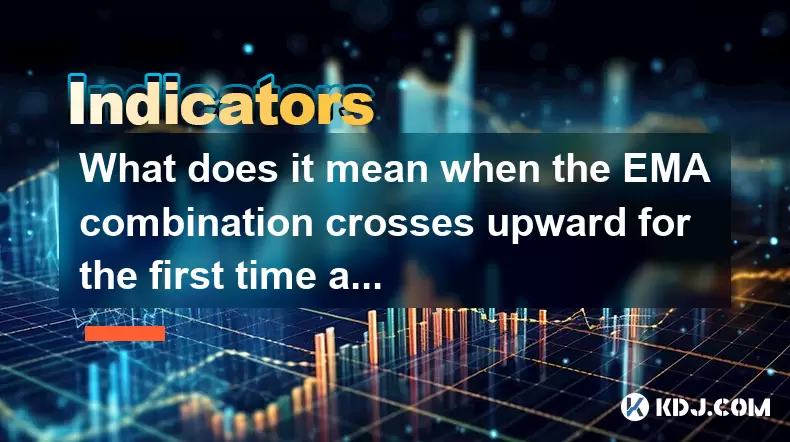-
 Bitcoin
Bitcoin $118600
0.36% -
 Ethereum
Ethereum $3855
1.06% -
 XRP
XRP $3.195
-0.09% -
 Tether USDt
Tether USDt $1.000
-0.04% -
 BNB
BNB $844.5
6.23% -
 Solana
Solana $191.3
2.83% -
 USDC
USDC $0.9997
-0.01% -
 Dogecoin
Dogecoin $0.2376
0.10% -
 TRON
TRON $0.3242
0.83% -
 Cardano
Cardano $0.8222
0.13% -
 Hyperliquid
Hyperliquid $45.26
6.53% -
 Sui
Sui $4.200
-2.56% -
 Stellar
Stellar $0.4336
-1.24% -
 Chainlink
Chainlink $18.86
0.28% -
 Hedera
Hedera $0.2796
-1.75% -
 Bitcoin Cash
Bitcoin Cash $583.3
-1.84% -
 Avalanche
Avalanche $27.06
8.09% -
 Litecoin
Litecoin $112.3
-1.16% -
 Toncoin
Toncoin $3.353
0.58% -
 UNUS SED LEO
UNUS SED LEO $8.968
-0.11% -
 Shiba Inu
Shiba Inu $0.00001395
-0.54% -
 Ethena USDe
Ethena USDe $1.001
-0.03% -
 Uniswap
Uniswap $10.76
0.69% -
 Polkadot
Polkadot $4.175
0.26% -
 Monero
Monero $326.7
1.07% -
 Bitget Token
Bitget Token $4.665
1.61% -
 Dai
Dai $0.9998
-0.02% -
 Pepe
Pepe $0.00001271
0.32% -
 Cronos
Cronos $0.1416
2.01% -
 Aave
Aave $299.3
1.15%
Should I go all-in when the volume shrinks and the price is stable?
Low volume with stable prices often signals market consolidation, not opportunity—relying on it to go all-in is speculative without on-chain or macro confirmation.
Jul 28, 2025 at 12:49 pm

Understanding Volume and Price Stability in Cryptocurrency Markets
When volume shrinks while the price remains stable, it often signals a period of consolidation in the cryptocurrency market. This means that trading activity is decreasing, and neither buyers nor sellers are aggressively pushing the price in either direction. During such phases, market sentiment tends to be neutral or uncertain. Low volume with stable pricing can indicate that major market participants are holding their positions, waiting for a catalyst to break the price out of its current range. It's crucial to recognize that low volume does not imply safety or opportunity by default—it merely reflects reduced activity.
In technical analysis, this scenario is often seen before a breakout or breakdown, but predicting the direction is inherently risky. Price stability on shrinking volume may suggest a lack of conviction among traders. If large holders (often called whales) are not actively trading, the market may lack the momentum needed for a strong directional move. Relying solely on this pattern to justify an all-in investment is speculative and could expose you to significant downside risk if the market eventually drops on renewed selling pressure.
What "Going All-In" Really Means in Crypto Investing
To go all-in means allocating your entire available capital into a single cryptocurrency or a narrow set of assets. This strategy eliminates diversification and dramatically increases exposure to volatility. In the context of shrinking volume and stable prices, choosing to go all-in assumes that the current price level is a reliable floor and that an upward breakout is imminent. However, this assumption lacks concrete confirmation unless supported by on-chain data, macroeconomic signals, or broader market trends.
Cryptocurrency markets are highly sensitive to news, regulatory changes, and whale movements. A stable price with low volume could just as easily precede a sudden dump if a large holder decides to exit. Without clear indicators such as increasing on-chain transactions, rising exchange outflows, or growing wallet adoption, betting everything on stability is equivalent to gambling. Risk management principles in crypto investing emphasize position sizing and avoiding emotional decisions, especially during ambiguous market phases.
How to Analyze On-Chain and Market Data Before Making a Decision
Before considering any major investment move, it's essential to examine on-chain metrics that provide deeper insight than price and volume alone. Tools like Glassnode, CryptoQuant, and Santiment offer data on:
- Exchange reserves: A declining balance of coins on exchanges may indicate accumulation, suggesting confidence among long-term holders.
- Network Value to Transactions (NVT) ratio: A high NVT could suggest overvaluation, even if the price is stable.
- Active addresses: If the number of daily active addresses is dropping alongside volume, it may signal weakening network engagement.
- Whale wallet movements: Large transfers to exchanges could foreshadow a sell-off.
Additionally, check funding rates on futures markets. If funding rates are neutral or slightly negative, it suggests that leverage is not skewed toward long positions, reducing the chance of a short squeeze. Conversely, highly positive funding rates might indicate over-leveraged longs, which could lead to a cascade of liquidations if the price dips. All these factors must align before even considering a significant position increase.
Step-by-Step Risk Assessment Before Allocating Capital
If you're contemplating going all-in during low-volume, stable-price conditions, follow this checklist to evaluate the risk:
- Review your current portfolio allocation and determine how much of your net worth is already exposed to crypto. Financial advisors often recommend no more than 5%–10% for speculative assets.
- Assess your risk tolerance—can you afford to lose the entire amount you're considering investing?
- Examine the asset’s fundamentals: Is it a top-tier cryptocurrency like Bitcoin or Ethereum, or a lower-cap altcoin with less liquidity?
- Check for upcoming events such as protocol upgrades, regulatory announcements, or macroeconomic data releases that could disrupt stability.
- Set stop-loss levels if using leverage or trading on exchanges, even if you believe the price won’t drop.
Skipping any of these steps increases the likelihood of emotional trading. Position sizing—investing a fraction of your intended amount first—allows you to test the market’s reaction without overcommitting.
Alternatives to Going All-In: Safer Strategies During Uncertainty
Instead of committing all your capital at once, consider dollar-cost averaging (DCA). This involves investing a fixed amount at regular intervals, regardless of price. For example:
- Allocate 20% of your intended investment now.
- Schedule automatic purchases weekly or bi-weekly.
- Reassess every month based on volume trends, on-chain data, and macro signals.
Another strategy is range trading, where you buy near support levels and sell near resistance during the consolidation phase. Use limit orders to automate entries and exits. You can also monitor order book depth to detect hidden liquidity. A thick order book on the bid side suggests strong support, while a thin book increases the risk of a swift drop.
Using options or futures with defined risk (e.g., buying call options instead of spot) allows exposure to upside without full capital commitment. However, these instruments require experience and carry time decay risks.
Frequently Asked Questions
Can low volume with stable price lead to a sudden breakout?
Yes, low volume consolidation often precedes breakouts, but the direction is unpredictable. Breakouts require follow-through volume to be valid. A price jump on continued low volume is likely a false move. Always wait for confirmed volume expansion before reacting.
Is it safer to go all-in on Bitcoin than on altcoins under these conditions?
Bitcoin generally has higher liquidity and stronger network effects, making it less prone to manipulation. However, even Bitcoin can experience sharp corrections. Stable price with shrinking volume in BTC may reflect macro uncertainty, such as Federal Reserve policy changes. Never assume safety based on asset rank alone.
How do I know if the stability is due to accumulation or apathy?
Look at on-chain accumulation patterns. If large wallets are receiving coins and not moving them, it may indicate accumulation. Conversely, if transaction counts and miner revenues are falling, it may reflect apathy. Tools like Santiment’s Active Supply can help distinguish between the two.
Should I trust chart patterns like triangles or rectangles during low volume?
Chart patterns can be useful, but low volume reduces their reliability. A symmetrical triangle breakout on low volume often fails. Wait for a close above resistance with at least 1.5x average volume to confirm validity. Use multiple timeframes to verify the pattern’s strength.
Disclaimer:info@kdj.com
The information provided is not trading advice. kdj.com does not assume any responsibility for any investments made based on the information provided in this article. Cryptocurrencies are highly volatile and it is highly recommended that you invest with caution after thorough research!
If you believe that the content used on this website infringes your copyright, please contact us immediately (info@kdj.com) and we will delete it promptly.
- Crypto Investments, Dogecoin Substitutes, and Wealthy Returns: Navigating the Meme Coin Mania and Beyond
- 2025-07-29 00:30:13
- Week Review: July 21 - July 27 - Crypto, AI, and Trade Deals, Oh My!
- 2025-07-29 00:30:13
- Bitcoin, Gold, and Debt Hedges: A New Yorker's Take
- 2025-07-29 00:50:12
- Bitcoin, Japan, Metaplanet: A New Era of Corporate Crypto Adoption?
- 2025-07-29 00:50:12
- Bitcoin Bonanza in Japan: Metaplanet Leads the Charge
- 2025-07-29 00:55:23
- Bitcoin, Merger, and ProCap Financial: A New Era for Crypto in Traditional Finance
- 2025-07-29 00:55:23
Related knowledge

What does it mean when the EMA combination crosses upward for the first time after sideways trading?
Jul 28,2025 at 03:43pm
Understanding the EMA and Its Role in Technical AnalysisThe Exponential Moving Average (EMA) is a widely used technical indicator in cryptocurrency tr...

What signal does the ROC send when it rises rapidly from a low level and breaks through the zero axis?
Jul 27,2025 at 10:15am
Understanding the Rate of Change (ROC) IndicatorThe Rate of Change (ROC) is a momentum-based oscillator used in technical analysis to measure the perc...

What does it mean when the price breaks through the double bottom neckline and the moving averages are arranged in a bullish pattern?
Jul 28,2025 at 10:57am
Understanding the Double Bottom PatternThe double bottom is a widely recognized reversal chart pattern in technical analysis, particularly within the ...

What signal does the DMA fast line cross the slow line above the zero axis?
Jul 28,2025 at 05:42am
Understanding the DMA Indicator and Its ComponentsThe DMA (Difference of Moving Averages) indicator is a technical analysis tool used in cryptocurrenc...

What does it mean that the rebound is blocked after the moving average is arranged in a short position for the first time?
Jul 26,2025 at 10:51am
Understanding the Short-Term Moving Average ConfigurationWhen traders refer to a 'short position arrangement' in moving averages, they are describing ...

What does it mean that the ZIGZAG low point is raised and the high point breaks through the previous peak?
Jul 28,2025 at 03:28am
Understanding the ZIGZAG Indicator in Cryptocurrency TradingThe ZIGZAG indicator is a technical analysis tool widely used in cryptocurrency trading to...

What does it mean when the EMA combination crosses upward for the first time after sideways trading?
Jul 28,2025 at 03:43pm
Understanding the EMA and Its Role in Technical AnalysisThe Exponential Moving Average (EMA) is a widely used technical indicator in cryptocurrency tr...

What signal does the ROC send when it rises rapidly from a low level and breaks through the zero axis?
Jul 27,2025 at 10:15am
Understanding the Rate of Change (ROC) IndicatorThe Rate of Change (ROC) is a momentum-based oscillator used in technical analysis to measure the perc...

What does it mean when the price breaks through the double bottom neckline and the moving averages are arranged in a bullish pattern?
Jul 28,2025 at 10:57am
Understanding the Double Bottom PatternThe double bottom is a widely recognized reversal chart pattern in technical analysis, particularly within the ...

What signal does the DMA fast line cross the slow line above the zero axis?
Jul 28,2025 at 05:42am
Understanding the DMA Indicator and Its ComponentsThe DMA (Difference of Moving Averages) indicator is a technical analysis tool used in cryptocurrenc...

What does it mean that the rebound is blocked after the moving average is arranged in a short position for the first time?
Jul 26,2025 at 10:51am
Understanding the Short-Term Moving Average ConfigurationWhen traders refer to a 'short position arrangement' in moving averages, they are describing ...

What does it mean that the ZIGZAG low point is raised and the high point breaks through the previous peak?
Jul 28,2025 at 03:28am
Understanding the ZIGZAG Indicator in Cryptocurrency TradingThe ZIGZAG indicator is a technical analysis tool widely used in cryptocurrency trading to...
See all articles

























































































